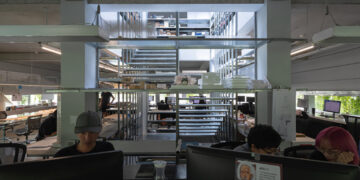Introduction Azadi Tower, a Symbol of Iranian Identity

The Azadi Tower, originally commissioned to commemorate the 2500th anniversary of the Persian Empire, has emerged as a potent symbol of Iran’s national identity, witnessing a tumultuous history of celebrations, unrest, and revolution. Designed by architect Hossein Amanat, the tower stands as an architectural and cultural landmark, embodying the resilience and aspirations of the Iranian people.

Architectural Inspiration and Design
Inspired by Persian history and architectural traditions, Amanat’s design for the Azadi Tower is a testament to his profound understanding of Iran’s rich heritage. Combining elements from pre-Islamic and Islamic periods, the tower’s main archway echoes the iconic structures of ancient ruins and historic mosques. The intricate details, including the unique squinches and window designs, pay homage to centuries of Persian craftsmanship and ingenuity.

Structural Engineering and Construction
To realize Amanat’s visionary design, structural engineering firm Arup was enlisted to navigate the complexities of the tower’s geometry and seismic considerations. Constructed with reinforced concrete and adorned with gleaming white marble, the Azadi Tower stands as a striking feat of engineering and craftsmanship. Each piece of stone cladding was meticulously shaped to fit the intricate curves and arches of the structure, showcasing the meticulous attention to detail.

Evolution and Renaming
Originally named the Shahyad Tower, the monument quickly became a focal point for dissent during the reign of the Shah. However, following the 1979 revolution, it was rechristened as the Azadi Tower, symbolizing the dawn of a new era of freedom and democracy. Despite political upheavals, the tower has retained its significance as a symbol of national unity, hosting both celebratory events and protests against government policies.
Architect’s Fate and Recent Challenges
While the Azadi Tower endured as a beacon of hope for the Iranian people, its architect, Hossein Amanat, faced persecution and exile due to his religious beliefs and ethnicity. Forced to flee Iran, Amanat resettled in Canada, where he continues his architectural practice.

In recent years, the Azadi Tower has faced neglect and structural issues, including cracked ceilings and water damage. Despite promises of repairs, concerns linger over the quality and effectiveness of restoration efforts, underscoring the need for sustained preservation efforts to safeguard this iconic monument for future generations.
Conclusion: A Tower of Resilience and Identity
The Azadi Tower stands as more than a mere architectural marvel; it is a testament to the enduring spirit of the Iranian people. Through periods of triumph and adversity, the tower has remained a symbol of national pride and resilience, embodying the collective aspirations for freedom, unity, and progress. As efforts continue to preserve and maintain this historic landmark, the Azadi Tower will undoubtedly endure as a cherished symbol of Iran’s rich cultural heritage and identity.

























